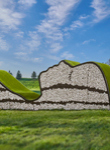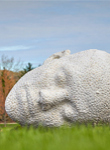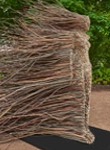Turkish hazelnut is an excellent hardy tree for lawns, street plantings, and urban conditions. Its heavy textured, dark green foliage is free of insects and disease. This tree is also pH adaptable and tolerant of heat, cold, and drought once it is established. In addition to its outstanding cultural tolerance, Turkish hazelnut yields attractive male catkins in early spring and striking beaked fruits.
- Family (English) Birch
- Family (botanic) Betulaceae
- Planting site City parkway, Residential and parks, Wide median
- Tree or plant type Tree
- Foliage Deciduous (seasonally loses leaves)
- Native locale Non-native
- Size range Large tree (more than 40 feet)
- Mature height 40-50 feet
- Mature width 15-35 feet
- Light exposure Full sun (6 hrs direct light daily), Partial sun / shade (4-6 hrs light daily)
- Hardiness zones Zone 4, Zone 5 (Northern Illinois), Zone 6 (City of Chicago), Zone 7
- Soil preference Moist, well-drained soil
- Tolerances Alkaline soil, clay soil, Dry sites, Occasional drought, Wet sites
- Season of interest early fall
- Flower color and fragrance Inconspicuous
- Shape or form Oval, Pyramidal
- Growth rate Moderate
- Transplants well No
- Planting considerations May be difficult to find in nurseries
- Wildlife Small mammals
- Has cultivars No

























































































